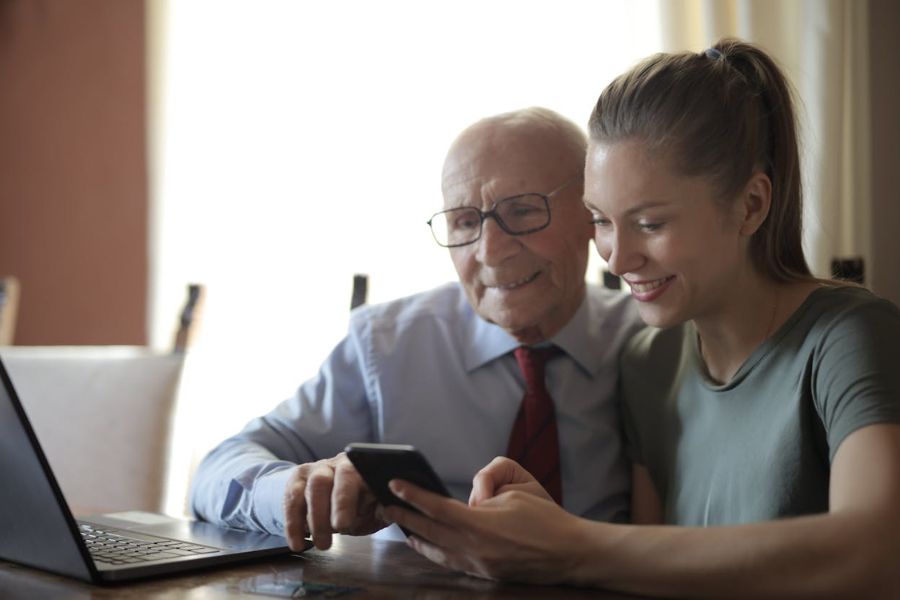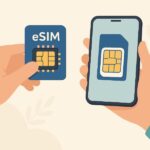Being a digital nomad has its perks: sunsets in new cities, spontaneous weekend adventures, a job you can do from anywhere with Wi-Fi. But when you’ve got aging parents back home, there’s a shadow that sometimes follows the sunshine. It’s the question that pops up in the middle of a train ride in Portugal or over a slow coffee in Chiang Mai—what if something happens while I’m not there?
This worry isn’t drama. It’s real. And for many who’ve embraced a borderless lifestyle, that mix of freedom and family responsibility can be tough to balance. That’s where elder care alert tech steps in—not just as a gadget, but as a quiet reassurance that you’re still showing up for your parents, even when you’re a thousand miles away.
Why “I’m Fine” Isn’t Always Enough
A lot of aging parents mean well when they say, “Don’t worry about me.” But slips and stumbles don’t always come with a warning. One in four adults over 65 takes a fall each year. Many of them happen at home. Sometimes there’s no one around to help, and the consequences of waiting too long can be serious.
The truth? Even the most independent parent can benefit from backup. And you don’t have to be physically present to offer it. With smart alert systems, your care becomes part of their everyday safety—subtle, supportive, and available on demand.
What Today’s Alert Systems Actually Do
Forget the old stereotype of a huge necklace and a basic panic button. Today’s systems have levelled up—and then some. Here’s a look at the kind of features modern users (and their kids) actually appreciate:
Automatic Fall Detection
It doesn’t rely on your parent pressing a button. If they fall and can’t move, the device notices and triggers an alert right away.
GPS Tracking
Perfect for parents who still get out and about. You can check location updates if needed, which is especially useful in unfamiliar neighborhoods or emergencies.
Two-Way Communication
Some devices act like walkie-talkies. The wearer can speak directly with a trained operator during an emergency, which feels more human than just triggering an alert.
24/7 Monitoring
These systems are backed by response teams that work round-the-clock. That means someone is always ready to help—even while you’re sleeping in another time zone.
Long Battery Life & Easy Charging
Most modern wearables last multiple days and come with simple docks or USB charging. No tricky plugs or tiny buttons.
Tech That Works With Your Lifestyle (and Theirs)
If you’re someone who lives abroad, works remotely, or just tends to chase sunshine more than stability, these systems are designed for you, too.
Many elder alert platforms let you:
- Receive text or app notifications if your parent presses the help button or a fall is detected.
- Check status updates from a dashboard or app.
- Add multiple contacts, so siblings or neighbours can be looped in as backups.
- Review activity logs if you’re curious about patterns or sudden changes in behaviour.
No VPN, no confusing setup. Just a steady line between your phone and theirs—even if your SIM card changes countries every few months.
Picking the Right System: A Quick Checklist
There are a lot of companies offering elder alert devices, but not all are created equal. Here are a few things worth prioritizing:
Is it waterproof?
Falls often happen in the bathroom. If it’s not safe to wear in the shower, skip it.
Does it work outside the home?
Some cheaper models only function inside with a base station. Look for a mobile device with full coverage.
Is professional monitoring included?
Self-monitored systems might miss crucial moments if no one answers their phone.
Is the device comfortable and discreet?
Nobody wants to wear something that screams “I’m fragile.” Sleeker designs win here.
What’s the customer service like?
This tech is meant to reduce stress, not create new headaches. Responsive support is a must.
Helping Your Parents Say Yes to Safety
Let’s be honest—tech adoption can be a touchy subject with older generations. Some are open to it. Others need a bit more reassurance that using an alert system doesn’t make them “old” or dependent.
Here are some ways to pitch it without resistance:
- Frame it as a tool for independence, not a restriction.
- Mention your own peace of mind—sometimes kids need it more than their parents do.
- Compare it to other tech they use (like smartphones or smartwatches).
- Keep the tone light. Try, “It’s like carrying a personal assistant around, just in case.”
You can also let them test it out for a week with no pressure to commit. Once they see how easy it is, they’re usually sold.
Real Peace of Mind: Stories From the Road
A quick example from a fellow nomad: Maya, a freelance UX designer based in Bali, shared how her mom had a dizzy spell back in Winnipeg. She didn’t call anyone—she pressed her wearable button. Within 60 seconds, help was on the way.
Maya got a ping on her app and followed up with her mom later that day. “It was scary,” Maya says, “but also kind of amazing. I didn’t have to wonder what might’ve happened. I knew exactly what did.”
These kinds of tech-enabled interventions don’t just save time. They save lives.
What You’re Gifting Them (and Yourself)
Yes, you’re buying a device. Yes, it has buttons and tracking and alerts. But zoom out a little.
What you’re giving your parents is the ability to stay independent longer. And what you’re giving yourself is permission to keep exploring without guilt.
It’s the emotional version of strong Wi-Fi: you might not think about it constantly, but you sure feel better knowing it’s always working in the background.

Final Thoughts: Being Present from Afar
There’s no substitute for showing up in person. But life doesn’t always allow it—especially for digital nomads, remote workers, or adult children juggling distance and duty. Smart elder care alert tech helps fill the gap. It acts like an extension of your care, available 24/7, quietly standing by when you can’t.
It’s not about wrapping your parents in bubble wrap. It’s about giving them tools to live boldly, just like you do.
Staying connected isn’t about being physically close—it’s about staying emotionally available. And sometimes, all it takes is one smart device to make that happen.


















